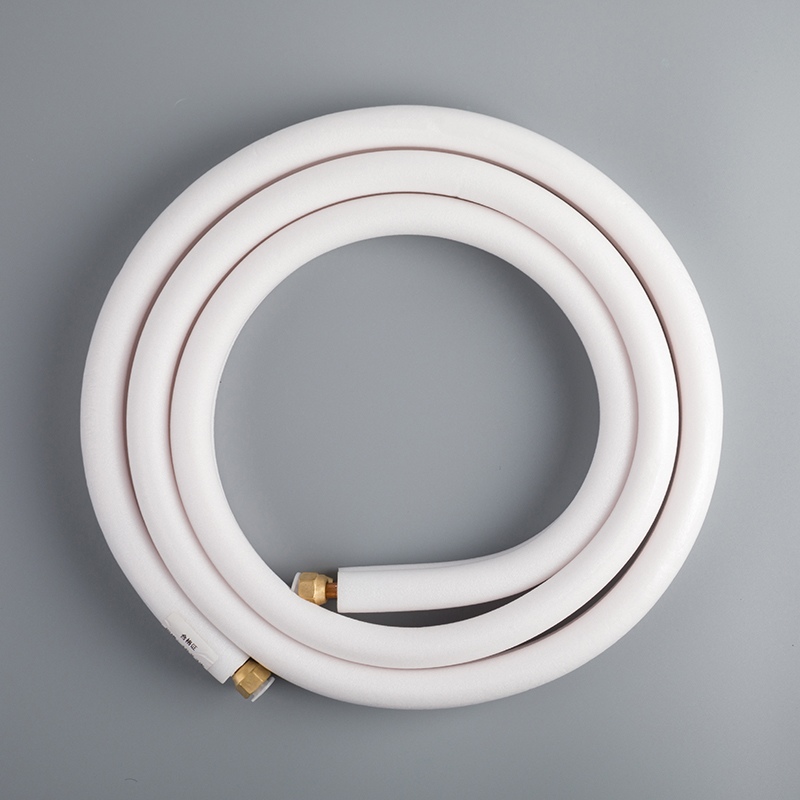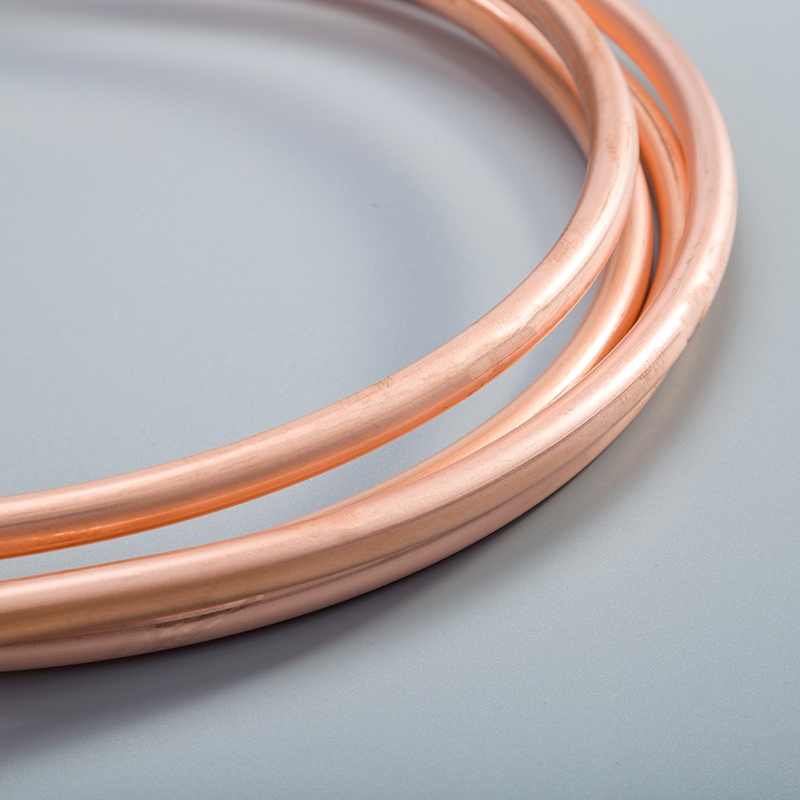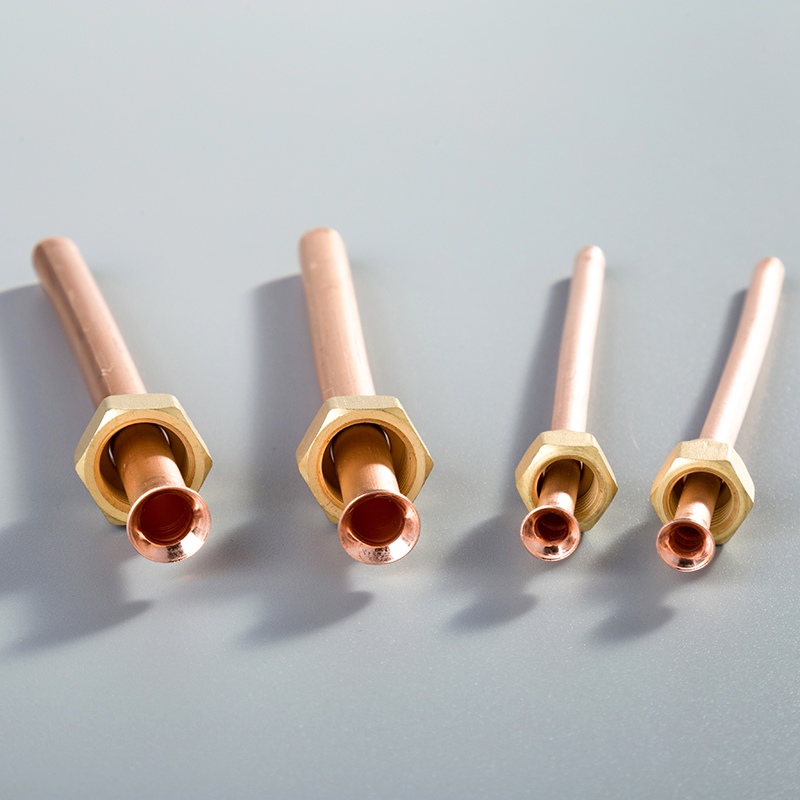Why Do Air Conditioner Copper Pipes Freeze?

Understanding why air conditioner copper pipes freeze is crucial for maintaining the efficiency and longevity of your cooling system. This blog aims to delve into the causes, solutions, and preventive measures related to this common issue. By exploring the reasons behind why air conditioner copper pipes freeze, you can take proactive steps to prevent potential damage and ensure your air conditioner operates smoothly.
Understanding the Problem
What Happens When Copper Pipes Freeze?
When copper pipes freeze, the consequences can be detrimental to the overall performance of an air conditioner. The impact on air conditioner performance is significant, often resulting in decreased efficiency and potential system damage.
Impact on Air Conditioner Performance
The freezing of copper pipes can lead to a chain reaction of issues within the air conditioning system. One critical consequence is the risk of bursting copper lines due to ice formation, which can cause severe damage to the entire HVAC setup.
Potential Damage to the System
The potential damage caused by frozen copper pipes extends beyond just the immediate impact on performance. The formation of ice within the pipes can result in a compromised cooling process, affecting the overall functionality and longevity of the air conditioner.
Why Is This a Common Issue?
Understanding why frozen copper pipes are a common occurrence sheds light on the underlying factors contributing to this prevalent problem.
Frequency of Occurrence
The frequency with which copper pipes freeze highlights a recurring issue faced by many air conditioner owners. It serves as a warning sign that preventive measures need to be taken to avoid such disruptions in system operation.
Common Symptoms and Signs
Recognizing common symptoms and signs associated with frozen copper pipes is crucial for early detection and intervention. Issues such as decreased cooling efficiency, unusual sounds from the unit, or visible ice buildup on the pipes are indicators that prompt action is necessary.
Primary Causes of Freezing Copper Pipes

Low Refrigerant Levels
When refrigerant levels are low, the evaporator coil becomes excessively cold, leading to the freezing of moisture in the air. This phenomenon can disrupt the heat exchange process within the air conditioning system.
How Low Refrigerant Leads to Freezing
Insufficient refrigerant causes a drop in temperature within the evaporator coil.
The lack of refrigerant results in inadequate cooling capacity, leading to ice formation.
Signs of Low Refrigerant Levels
Warm air blowing from vents indicates a potential refrigerant issue.
Hissing or bubbling noises may suggest low refrigerant levels affecting system performance.
Restricted Airflow
Issues with airflow restriction can also contribute to the freezing of copper pipes. Inadequate airflow across the evaporator coil can cause condensation to freeze on its surface, further exacerbating the problem.
Causes of Restricted Airflow
Clogged air filters reduce airflow, potentially causing the air conditioner to freeze.
Crushed or collapsed ducts create obstructions that impede proper airflow circulation.
How Restricted Airflow Causes Freezing
Reduced airflow over the evaporator coil hinders heat transfer efficiency.
Lack of proper ventilation leads to temperature imbalances, resulting in frozen copper pipes.
Issues with the Evaporator Coil
Problems related to the evaporator coil can also play a significant role in causing copper pipes to freeze. A dirty or blocked evaporator coil can disrupt normal cooling processes and lead to ice buildup.
Dirty or Blocked Evaporator Coil
Accumulated dirt and debris on the coil hinder heat absorption and dissipation.
Blockages prevent efficient operation, increasing the likelihood of pipe freezing.
Malfunctioning Evaporator Coil
A malfunctioning thermostat may cause extended cooling cycles, promoting ice formation.
Faulty components within the coil can compromise overall system performance and trigger freezing episodes.
Solutions and Preventive Measures

Checking and Maintaining Refrigerant Levels
To check refrigerant levels, one should begin by examining the condenser unit for any visible leaks or damage. Next, use a refrigerant pressure gauge to measure the pressure in the system. If the pressure is below the recommended level, it may indicate a refrigerant leak. In such cases, contacting a professional HVAC technician is advisable.
Ensuring Proper Airflow
To guarantee proper airflow, start by inspecting and cleaning or replacing air filters regularly. Clogged filters can obstruct airflow, leading to inefficiencies in the cooling process. Additionally, check vents and ducts for any blockages or obstructions that could impede airflow. Ensuring unobstructed airflow is essential for preventing copper pipes from freezing.
Maintaining the Evaporator Coil
Regular maintenance of the evaporator coil is crucial for preventing freezing issues. Clean the coil periodically to remove dirt and debris that can accumulate over time. Professional maintenance tips include scheduling annual HVAC inspections to ensure optimal performance and early detection of any potential problems.
In summary, understanding the causes of frozen copper pipes is vital for maintaining a well-functioning air conditioning system. Regular maintenance, such as checking refrigerant levels and ensuring proper airflow, can prevent this issue. Insulating external pipes and keeping indoor temperatures above freezing are additional measures to safeguard against pipe freezing. Remember, seeking professional help when needed ensures the longevity of your air conditioner and a comfortable indoor environment. Prevention is key to avoiding the hassle of dealing with frozen copper pipes.
See Also
Benefits of Opting for Copper Tubing in Air Conditioning
The Advantages of Copper Piping in Air Conditioning
The Importance of Copper Tubes for Effective Air Conditioning


